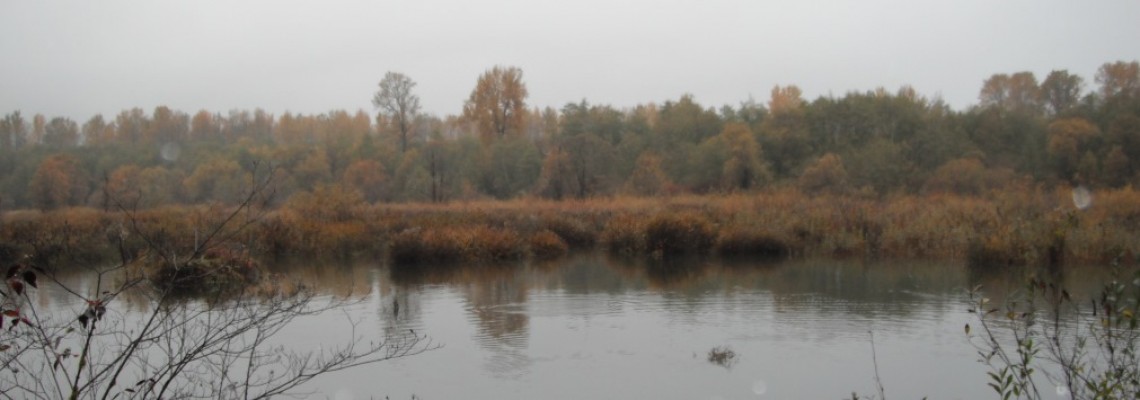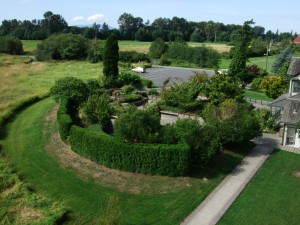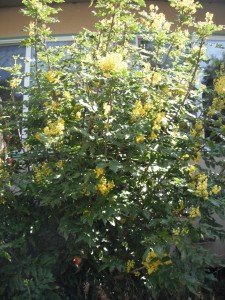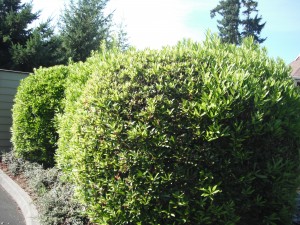Plants as Screens, Hedges and Hedgerows
Shrubs and trees are often used in the landscape to create barriers. Privacy screens are the most common, either to prevent other people from seeing into an area, or to physically keep them out. Often screens are planted to block out traffic noise. Sometimes they are merely used as a design element to cover an unsightly view or to create a secluded nook within a garden. Historically, the classic English hedgerow was used instead of fences to create boundary lines between properties and pasturage, often providing the only refuge of shelter for remnant wildlife populations.
Being a “green” gardener, I try to discourage people from planting single-species hedges. Personally, I think they are boring, and if shearing is required, too much work. A mixed-species screen is more interesting and provides better habitat for wildlife.
When deciding what type of plants you want in a hedge or screen, first you need to decide how much room you have—how wide and what heights are desired or acceptable. Unfortunately, if you have limited space your choices of plant material are severely limited. That is why arborvitaes, Thuja occidentalis varieties, are so popular; the columnar types fit in narrow areas and stay neat without shearing and can usually be purchased inexpensively. Many other cultivated conifer varieties are also suitable.
Most people want plants that are fast growing to quickly fill in the space, but such plants can quickly become a problem too. Popular hedge species such as the English Cherry Laurel, Prunus laurocerasus, and the red-leaved Photinia x fraseri easily get out of hand even if they are sheared regularly.
English yew, Taxus baccata, is the traditional species for mazes and topiary. It is long-lived and can take much shearing and pruning but because it is slow growing, it requires patience (it also can be expensive initially!).
I recommend using natives when possible, but unfortunately unless you have space for tall conifers, such Cedars, Hemlocks and Firs, there are few good choices of shrub-size native evergreens. Tall Oregon Grape, Mahonia aquifolium, is one of the best, but it has prickly leaves that may not be desirable for some applications. Evergreen Huckleberry, Vaccinium ovatum, and Salal, Gaultheria shallon, are so slow growing; they will probably not achieve the desired height for many decades, although they could still be a part of the overall design.
For some better choices we can look further south. The fragrant, Pacific Wax Myrtle, Morella (Myrica) californica, is related to the eastern Bayberry. The California Bay Laurel (Oregon Myrtle), Umbellularia californica, is also fragrant but gets very big. The Coast Silk Tassel, Garrya elliptica, has attractive, long catkins in late winter.
Leyland Cypress, Cupressocyparis leylandii, is a hybrid of our native Alaska Yellow Cedar and the California native, Monterey Cypress. It is a popular fast growing tree often used for screening.
Some exotic species will fit nicely into northwest landscapes. The Strawberry Tree, Arbutus unedo, related to our native Pacific Madrone, comes from the Mediterranean. Pieris varieties have clusters of white or pink flowers, pink or reddish new growth and fit in well with rhododendrons. Evergreen Barberries, Berberis sp., have bright yellow flowers like their relative, Oregon Grape, and large thorns to keep people and animals out! Escallonias, from Chile have pretty pink flowers. Osmanthus species have fragrant white flowers. Evergreen Euonymous varieties have interesting variegated leaves.
As for any garden design project, thought should be given as to how plants in your hedgerow will change through time and what possible maintenance will be required. It should bring you joy—not just more work!
(This article was first published in the Peninsula Gateway on November 18, 2009.)




